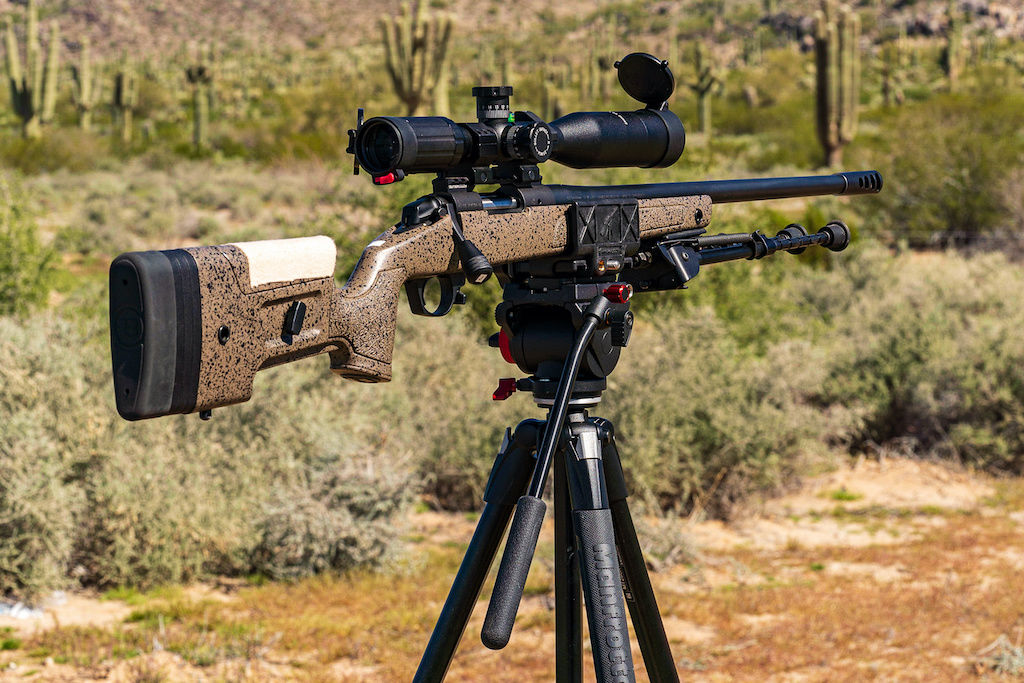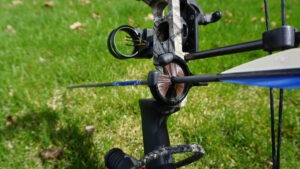Saltwater fishing is a popular recreational activity enjoyed by many anglers around the world. However, one crucial factor that can greatly impact your fishing success is the water temperature. Understanding the importance of water temperature in saltwater fishing is essential for maximizing your chances of a fruitful day on the water.
In this article, we will delve into the science behind water temperature and fish behavior, identify the ideal water temperatures for different saltwater fish, explore tools and techniques for measuring water temperature, discuss how to adapt your fishing strategies based on water temperature, and answer some frequently asked questions about this topic.
Understanding the Importance of Water Temperature in Saltwater Fishing
Water temperature plays a significant role in the behavior and feeding patterns of saltwater fish. Fish are ectothermic creatures, meaning their body temperature is determined by the temperature of their surrounding environment. As a result, they have developed specific temperature preferences and behaviors that coincide with different water temperature ranges. By understanding these preferences, anglers can strategically target fish species during favorable temperature conditions.
The Science Behind Water Temperature and Fish Behavior
The relationship between water temperature and fish behavior is rooted in the metabolic rate of fish. As the water temperature increases, so does the metabolic rate of fish, which in turn increases their activity level. This rise in activity level can lead to more aggressive feeding behavior, making it an ideal time for anglers to capitalize on the increased fish activity.
Conversely, when water temperatures drop, fish become less active, causing their metabolic rate to decrease. During these colder periods, fish may seek refuge in deeper waters to conserve energy. Additionally, colder water temperatures can affect the availability, metabolism, and digestion of prey species, further influencing fish behavior.
For example, in colder water temperatures, certain prey species may become less active or migrate to warmer areas. This can impact the food sources available to saltwater fish, causing them to adjust their feeding patterns accordingly. Understanding these nuances can give anglers an advantage in selecting the right bait or lures to attract fish during specific temperature ranges.
How Seasonal Changes Affect Water Temperature
Seasonal changes have a significant impact on water temperature in saltwater environments. As the seasons transition from winter to spring and summer, the water temperature gradually increases. This temperature rise triggers various fish species to migrate, spawn, or change their feeding patterns.
During spring and summer, when water temperatures are warmer, many species of saltwater fish become more active and move closer to the surface in search of food. This period provides ample opportunities for anglers to target these fish near the shoreline or in shallow waters.
Furthermore, seasonal changes can also influence the availability of certain prey species. For example, during the spring, the increase in water temperature can lead to an abundance of baitfish and other small organisms that serve as food sources for larger predatory fish. Anglers who are aware of these changes can adjust their fishing techniques and target areas where these prey species are concentrated.
In contrast, as the seasons shift from summer to fall and winter, the water temperature gradually decreases. This drop in temperature can prompt fish to move to deeper areas where they can find more stable temperature conditions. Understanding these seasonal changes and their impact on water temperature is crucial for successful saltwater fishing throughout the year.
During the colder months, anglers may need to adjust their fishing strategies by targeting deeper waters or using different bait and lures that mimic the slower movements of fish in colder temperatures. Additionally, understanding the specific temperature preferences of different fish species can help anglers identify the best locations and times to fish during these seasonal transitions.
In conclusion, water temperature is a key factor in saltwater fishing. By understanding the relationship between water temperature and fish behavior, as well as the impact of seasonal changes, anglers can increase their chances of success on the water. So, the next time you head out for a saltwater fishing adventure, be sure to consider the water temperature and its influence on the fish you’re targeting.
Identifying the Ideal Water Temperatures for Different Saltwater Fish
Different fish species have specific temperature preferences that optimize their feeding and activity levels. By targeting these preferred temperature ranges, anglers can significantly increase their chances of success when fishing for a particular species. Let’s explore the ideal water temperatures for some popular saltwater fish:
Optimal Temperatures for Tuna, Marlin, and Other Pelagic Species
Tuna, marlin, and other pelagic species thrive in warm waters. Their ideal temperature range typically falls between 70°F (21°C) and 85°F (29°C). These fish are highly migratory and tend to follow warm ocean currents in search of prey. During these temperature ranges, these species exhibit heightened feeding activity, making them more receptive to bait and lures.
When the water temperature is in the lower end of their preferred range, around 70°F (21°C), tuna and marlin are more likely to be found closer to the surface, where the water is warmer. As the temperature rises towards the upper end of their range, around 85°F (29°C), these fish tend to move deeper into the water column, following the thermocline where the temperature is most suitable for their metabolism.
During the warmer months, when the water temperature is at its peak, anglers targeting tuna and marlin often find success by trolling lures or live bait in areas where warm ocean currents converge. These convergence zones create ideal feeding grounds for these pelagic species, as the warm water attracts smaller fish and other prey species.
Ideal Conditions for Bottom-Dwelling Fish like Flounder and Halibut
Bottom-dwelling fish such as flounder and halibut prefer cooler waters compared to pelagic species. Their ideal temperature range can vary depending on the specific species, but it generally falls between 50°F (10°C) and 60°F (15°C). These fish species are commonly found in deeper waters near the ocean floor, where the temperature is more stable and suitable for their survival.
Flounder and halibut are known for their ability to camouflage themselves on the ocean floor, blending in with the sandy or rocky substrate. The cooler water temperatures in their preferred range help these fish maintain their metabolic rate and conserve energy, allowing them to patiently wait for prey to come within striking distance.
During the colder months, when the water temperature drops towards the lower end of their ideal range, flounder and halibut tend to move closer to shore, seeking out shallower areas where the water is slightly warmer. Anglers targeting these bottom-dwelling species often find success by using bait rigs or jigs tipped with natural bait, strategically placed near structures such as reefs, wrecks, or underwater ledges.
Tools and Techniques for Measuring Water Temperature
To accurately determine the water temperature, anglers rely on various tools and techniques:
When it comes to measuring water temperature, anglers have a range of tools and techniques at their disposal. These methods not only provide accurate readings but also offer valuable insights into temperature patterns and variations.
Using a Marine Thermometer for Accurate Readings
A marine thermometer is a useful tool for measuring water temperature directly. Simply submerge the thermometer in the water for a few moments to obtain an accurate reading. The thermometer’s design ensures that it can withstand the aquatic environment, making it a reliable choice for anglers.
However, it’s important to note that water temperature can vary at different depths and locations within a body of water. To account for these variations, anglers should collect multiple readings at various depths and locations. By doing so, they can gain a comprehensive understanding of the temperature profile of the water they are fishing in.
Advanced Techniques: Satellite Imagery and Temperature Charts
For more advanced anglers, there are additional tools and techniques available to analyze water temperature patterns over larger areas. Satellite imagery and temperature charts provide valuable insights into areas with ideal temperature ranges, helping anglers plan their fishing trips more effectively.
Satellite imagery allows anglers to visualize temperature variations across vast bodies of water. By observing the color variations in the imagery, anglers can identify areas with warmer or cooler water temperatures. This information can be particularly helpful when targeting specific fish species that prefer certain temperature ranges.
In addition to satellite imagery, temperature charts are another valuable resource. These charts display temperature data collected from various sources, including buoys and weather stations. By studying these charts, anglers can identify temperature trends and locate areas where the water temperature is most conducive to their target species.
By combining traditional methods, such as using a marine thermometer, with advanced techniques like satellite imagery and temperature charts, anglers can gain a comprehensive understanding of water temperature. This knowledge enables them to make informed decisions when planning their fishing trips, increasing their chances of success on the water.
Adapting Your Fishing Strategies Based on Water Temperature
Successful anglers know that adjusting their fishing strategies based on water temperature can significantly improve their catch rate. Here are some tips to help you adapt:
Adjusting Your Bait and Tackle for Different Temperatures
Matching your bait and tackle to the prevailing water temperature is crucial for enticing fish to bite. For example, during warmer temperatures, fish are more active and may respond well to fast-moving lures or flashy bait presentations. In contrast, during colder temperatures, using slower-moving lures or natural bait that mimics the behavior of sluggish prey can yield better results.
Timing Your Fishing Trips: Dawn, Dusk, and Everything in Between
Water temperature can fluctuate throughout the day, with certain periods offering more favorable conditions for feeding fish. Dawn and dusk are generally considered prime fishing times, as the water temperature is often more stable, and fish tend to be more active during these transitional periods. However, different species may exhibit specific feeding behaviors at other times of the day, so it’s important to research and understand the target species’ habits.
Frequently Asked Questions About Water Temperature and Saltwater Fishing
Do All Fish Respond the Same Way to Water Temperature?
No, different fish species have specific temperature preferences and behaviors. Some fish are more active in warmer waters, while others prefer cooler temperatures. It is crucial to understand the preferences of your target species for a successful fishing trip.
How Does Water Temperature Affect Fish Feeding Patterns?
Water temperature directly influences fish metabolic rates and activity levels. Warmer water temperatures usually trigger more aggressive feeding behaviors, while colder water temperatures can cause fish to become less active and more selective in their feeding habits.
As an angler, knowledge of water temperature and its impact on fish behavior is an invaluable tool. By understanding the science behind water temperature, identifying optimal temperature ranges for different fish species, utilizing tools for measuring water temperature, adapting your fishing strategies, and considering frequently asked questions, you can increase your chances of success in saltwater fishing. So, the next time you head out to the water, remember to pay attention to the temperature and adjust your approach accordingly to discover the best water temperature for saltwater fishing.


